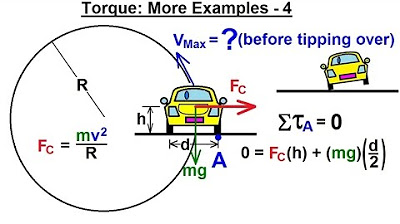Independent and Dependent Variables
TLDRThis video script explores the concept of independent and dependent variables in the context of a study investigating whether car color influences driving speed. A psychologist hypothesizes that red cars might lead to faster driving due to the color's psychological effects. The study design involves participants driving different colored cars on an empty race track, with the average speed recorded. The independent variable is the car color, kept separate from other factors, while the dependent variable is the speed, which is measured to determine the effect of color. The script aims to educate viewers on how to isolate variables in a study to draw accurate conclusions.
Takeaways
- 🔍 The video discusses a psychological hypothesis that the color of a car might affect driving speed.
- 🚗 The study design involves assigning participants randomly to drive a car of one of four colors: red, blue, green, or white, on an empty race track.
- 📊 The independent variable in the study is the color of the car, which is the factor the researcher manipulates.
- 📈 The dependent variable is the average speed in miles per hour that participants drive, which is measured as the outcome.
- 🧐 Variables are elements within a study that can change or vary, such as mood, weather, or age.
- 🔑 The purpose of the study is to isolate the effect of the car's color on driving speed while keeping all other factors constant.
- 🎨 The colors chosen for the study are red, blue, green, and white, each representing a condition where all other variables are the same.
- 📐 To ensure the study's validity, all conditions must be identical except for the color of the car, including weather and traffic.
- 📝 The data collected is the speed at which participants drive, which is analyzed to determine if the car's color has an impact.
- 📊 The results of the study could be visualized on a graph with the independent variable (color) on the x-axis and the dependent variable (speed) on the y-axis.
- 💡 The study aims to provide insights into whether the color of a car influences driving behavior, specifically speed.
Q & A
What is the main hypothesis of the study mentioned in the video?
-The main hypothesis of the study is that participants given a red car, as opposed to a blue or green car, may drive faster because seeing red can increase heart rate and cause an adrenaline rush.
What is the purpose of the video?
-The purpose of the video is not to argue whether car color affects driving speed, but to understand and break down the variables involved in a study, specifically the independent and dependent variables.
How are participants assigned in the study?
-Participants are randomly assigned to four conditions: driving a red car, a blue car, a green car, and a white car.
What is the task given to each participant in the study?
-Each participant is told to drive around an empty race track 50 times, and their average speed in miles per hour is recorded.
What is meant by 'variables' in the context of a study?
-In the context of a study, 'variables' refer to the elements that can vary or change, such as the color of a car or the speed at which someone drives.
Why is the color of the car considered the independent variable in this study?
-The color of the car is considered the independent variable because it is the variable that is being manipulated or changed in the study to observe its effect on driving speed.
What other factors might affect how fast someone drives, aside from car color?
-Other factors that might affect driving speed include the type of car, the driver's mood, weather conditions, the driver's age, and traffic conditions.
Why must all variables other than the color of the car remain constant in the study?
-All other variables must remain constant to isolate the effect of car color on driving speed, ensuring that any changes in speed can be attributed solely to the color of the car.
What is the dependent variable in this study?
-The dependent variable in this study is the speed at which participants drive, as it depends on the independent variable, which is the color of the car.
How can the results of the study be visualized?
-The results of the study can be visualized using a bar graph, with the independent variable (car color) on the x-axis and the dependent variable (average speed in miles per hour) on the y-axis.
What can be concluded from the study's results?
-The study's results can be used to make inferences about whether the color of a car impacts driving speed, based on the average speed recorded for each car color condition.
Outlines
🚗 Understanding Study Variables: Independent and Dependent
This paragraph introduces a psychological study examining the impact of car color on driving speed. It explains the design of the study, where participants are randomly assigned to drive a car of one of four colors (red, blue, green, or white) around an empty race track 50 times, with their average speed recorded. The paragraph also discusses the concept of variables in scientific studies, distinguishing between independent and dependent variables. The independent variable is identified as the car's color, which is manipulated and isolated from other factors to observe its effect on the dependent variable—driving speed. The goal is to control all other variables such as weather, traffic, and car type to ensure that the only changing factor is the color of the car.
📊 Analyzing Results: The Dependent Variable and Study Outcomes
This paragraph delves deeper into the concept of the dependent variable, which in this study is the speed at which participants drive. It explains that the dependent variable is the outcome or result that researchers measure to determine the effect of the independent variable—the car's color. The paragraph provides a hypothetical example of how data might be collected and analyzed, suggesting that the average speed for each color could be compared to assess the impact of color on driving speed. It also introduces a visual representation of the data using a bar graph, where the independent variable (color) is on the x-axis and the dependent variable (speed) is on the y-axis. The paragraph concludes with the idea that the results can lead to conclusions or inferences about the relationship between car color and driving speed.
Mindmap
Keywords
💡Color of a car
💡Psychologist
💡Hypothesis
💡Independent variable
💡Dependent variable
💡Study design
💡Variables
💡Experiment
💡Average speed
💡Race track
Highlights
The study investigates if the color of a car affects driving speed.
Participants are assigned to drive a red, blue, green, or white car on an empty race track.
The average speed in miles per hour is recorded after driving around the track 50 times.
The study design aims to understand variables, specifically independent and dependent variables.
Variables are elements within a study that can vary or change.
The color of the car is the independent variable, isolated from other factors.
Factors like car type, mood, weather, age, and traffic are variables kept constant.
The speed at which participants drive is the dependent variable, influenced by the car color.
The independent variable is manipulated or changed during the study.
The dependent variable represents the results or data collected.
A hypothetical bar graph illustrates the average speed for each car color.
The study's results can be analyzed to determine the impact of car color on driving speed.
The independent variable is represented on the x-axis in a graph.
The dependent variable is represented on the y-axis in a graph.
A memory technique for dependent variables is 'DD' for dependent data.
The study's conclusion is based on the relationship between the independent and dependent variables.
The video educates on the importance of isolating variables in a study for accurate results.
Transcripts
Browse More Related Video

Identify Variables in a Scientific Investigation

Variables in Science: Independent, Dependent and Controlled!

High School Physics - Circular Speed

Physics 15 Torque (22 of 25) More Examples: 4 V(max)=? Before Car Tips

Implicit Differentiation: Knowing Dependent and Independent Variables

Statistics 101: Multiple Linear Regression, The Very Basics 📈
5.0 / 5 (0 votes)
Thanks for rating: